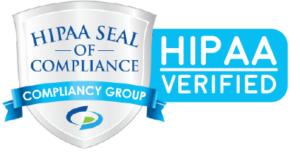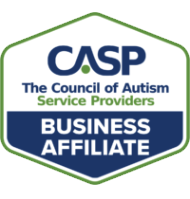Digital Marketing basics for BCBAs and ABA Therapists wanting to leverage social media and the web to obtain more clients.
This week, guest blogger Chris Estep, founder of TheChatterBox Guys, will highlight how you can use digital marketing to build your business and your clientele.
Attention new BCBAs and longtime ABA Therapy providers! Are you looking to build your reputation and your clientele, all at the same time? Social media is here to help! But you already knew this, right? Just exactly how can social media help and what do you need to do to get started? Let’s take a look.
When we talk about social media marketing, really we are talking about digital marketing (i.e., not just social media), and digital marketing can be used in many ways to help you and your business reach its goals. The tall subject of all things digital marketing is much bigger than we can fully get into here, of course. In this blog post, I’m going to spell out the basics of digital marketing and how you can get started and begin getting the word out about your business.
This is a high level view of the best overall digital marketing approach. Of course, there are other paths you can take that will help as well. But we will look at the big picture for now to give you a good idea of how best to get started. The basics of digital marketing can be broken down into three targeted areas: SEO, Content Marketing, and Social Media Marketing.
1. SEO—Search Engine Optimization/Marketing
SEO (and it’s close sibling, SEM) is all about making sure that people can actually find you when they search for your services on the internet (see my blogs on some of the basic SEO strategies at TCBGuys.net). As Google is the single largest search engine, and most people use Google when they need to search for anything and everything, SEO really revolves around where you show up in a Google search. The latest studies show that 80% of users click one of the first three results after a search. Only 10% of users click on any of the 7 others listed on the first page. And only 10% go on to page 2. These are averages, and they take into account local retail searches along with all others. So, in the case of finding a good therapist, you would hope that some folks will look further than the first listings. Still, it’s rather important that you rank high on that first page of results as you are still way more likely to get a click there than you are further down. So, how do we get there?
 Website basics. If you don’t have a website, we have to back up a bit and start with a website—a search engine optimized website! Google has some 400+ parameters used in its ranking algorithm. Some are way more complex than others. To get your foot in the door, though, you really must have a few of the basic components completed on your website, even if it is a simple static electronic brochure. Without the site basics in place, Googlebot won’t know how to categorize you and will pass right on by (so to speak). Since we want and need high rankings in Google searches, digital marketing starts here. Look at your website from both the user perspective and through the coding to make sure as many of the basic features are in place. Is the navigation clear and logical? Can you get around your site easily to find the important information? Is it mobile-friendly (Google recently updated its algorithm to favor mobile-friendly websites over non-mobile-friendly)? These are important factors to consider from the user perspective. From the backend, whether you are using Wix, Squarespace, or a WordPress site (or coding your own html if you are brave enough), you can add “meta” description tags for each page. These are the two that you absolutely must have in place:
Website basics. If you don’t have a website, we have to back up a bit and start with a website—a search engine optimized website! Google has some 400+ parameters used in its ranking algorithm. Some are way more complex than others. To get your foot in the door, though, you really must have a few of the basic components completed on your website, even if it is a simple static electronic brochure. Without the site basics in place, Googlebot won’t know how to categorize you and will pass right on by (so to speak). Since we want and need high rankings in Google searches, digital marketing starts here. Look at your website from both the user perspective and through the coding to make sure as many of the basic features are in place. Is the navigation clear and logical? Can you get around your site easily to find the important information? Is it mobile-friendly (Google recently updated its algorithm to favor mobile-friendly websites over non-mobile-friendly)? These are important factors to consider from the user perspective. From the backend, whether you are using Wix, Squarespace, or a WordPress site (or coding your own html if you are brave enough), you can add “meta” description tags for each page. These are the two that you absolutely must have in place:
Title—Page titles should be descriptive of the page content and succinct. Use a key phrase in the title (more on key phrases below) if it fits the content, your business name if possible, and keep it under 50 characters
Description—Describe the content of the page. Use the same key phrase as used in the title and think of this as a headline that should grab people’s attention and make them want to click. Keep the description under 150 characters and the whole description will show up in the search result.
Click here to see the results of ababilling.net title and description tags.
There are many other ways to optimize your pages using “structured data” or “rich snippets.” You can read more about these if you are feeling like getting your hands dirty under the hood.
Key Phrase Analysis. In order to fully optimize your website and then be able to move forward with any targeted marketing (your content, your social channel profiles, etc.), we must research what people are searching for when they go to Google to find your services. The best tool to start with is the Google Keyword Planner [https://adwords.google.com/home/tools/keyword-planner/]. We find the best converting phrases (the most specific search terms: “Flagstaff ABA Therapy provider” or “Flagstaff autism therapy” will get better local results than “ABA Therapy” or “autism therapy” if you want those searching in your area to find you) and begin using them in smart ways within your website. I say “in smart ways” because Google has been on to the “keyword stuffing” methods of the past for quite some time. From short tail key words to long tail key phrases, make sure your site is truly optimized with the right phrases (and varied as you are able) used in the most meaningful ways—they must make sense within the context of the page itself. Google’s webmaster tools can help you get a look at your site to evaluate how well you are using key phrases.
Review your site, your key phrase analysis, and your use of key phrases regularly, adjust as necessary, and you should begin to see a steady climb in the rankings. Note that it can take weeks to months to get to the top depending on your competition. But if you continue with the next steps, you definitely see progress.
2. Content Marketing
Content marketing is taking all the great things that you do and know and sharing them with your potential customers—showing them that you are the experts in your field—by way of your webpages and blogs, infographics, videos, and the like. It is turning your expertise into valuable and shareable content that can be dispersed through the social channels to bring awareness of your brand and your products—ultimately leading to more clients/sales. Lead with value, and your customers will follow.
One of the great benefits of building content of your own is that it stays available on your website forever. Make a Facebook post and within a day or two it’s likely to never be seen again on anyone else’s timeline. Tweet the same thing on Twitter and it only has a couple of hours of life before it’s completely lost in the Twitter-sphere. But, post to your website and it’s yours to keep forever. From there, you can share to Facebook and Twitter as much as you like. And guess what? Google loves fresh permanent content. So, much that this is the best way to continue your climb up the search rankings after your site optimization.
The best and simplest way to begin building your own content to share is to start blogging. Blog about what you do. Tell the world who you are as a business and what makes you tick. These days, people want to do business with people—people that they like. Show them how likeable you are by solving everyday problems with solutions that can only come from your expertise. Plan out a blogging strategy based on both your expertise and your key phrase research as your content will also be searchable. Plan content for potential customers who need your services right away, and plan content for those who are just browsing—most people like to do their own research before committing, so it is good to have a variety of topics and types of content on your site that can both inform and show that you are the right choice for immediate and future needs. The more you continue to provide, the higher you will climb in search rankings—and the more able you are to keep in front of potential customers. Studies have shown that if you continue to post, as you reach 25 posts, your rankings start to fly up the charts and your audience becomes exponentially more active.
Use landing pages and specific calls to action in your content and on your website in a strategic campaign and you will see yourself getting more and more emails and calls from potential clients becoming actual clients.
3. Social Media Marketing
Finally! Social Media! And here’s how we use it. We leverage social channels as places to share your content as well as the content of others (more on “curating” content here) in order to get your name in front of users and to bring traffic back to your website. Think of it as a large funnel: Google searches, Facebook posts, Tweets, LinkedIn posts, YouTube videos, all of these great tools out there being used, grabbing attention, and bringing visitors to shared content on your website. Strategically placed “calls to action” in the shared content and on your website then move those visitors into becoming contacts and customers. The cycle is complete. But how does one best leverage social media?
First, we listen and take great notes. There are conversations already taking place about your products/services and about your competition’s products/services. We listen, learn, and engage. The more your company interacts with others in the conversation—in meaningful ways and not in interruptive ways, mind you, such as offering solutions and helpful expert advice—the more people will begin to see you as the experts you are and will consider your words as more influential. Second, we use what we learn to inform our content building. Questions people are asking, issues they are running into, these are the building blocks for your blogging and content building. Answer the question in a blog and share it for all to see. Solve an issue in a blog and share it for all to see. Once this cycle of listening, learning, engaging, and building content for sharing is running and feeding itself, you will find your name popping up higher and higher in searches and in the minds of those who need your services.
What ties the three basics all together in time are metrics and analysis. Developing realistic goals and expectations is vitally important. Measure progress toward these goals as you move forward and adjust your strategy where necessary to get the most return on your time and expense. Google Analytics provides a wealth of site tracking data. It takes some getting used to (I’m GA certified, and it is still a handful for me), but the value of the data is unquestionable. Watch for what’s working and continue with that. Watch for what isn’t working and modify your approach.





